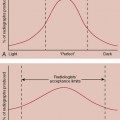CHAPTER 25 On completion of this chapter, you should be able to: • Understand the required number of credits needed to renew registration with the American Registry of Radiologic Technology. • Document proof of participation in obtaining continuing education credits. • Identify alternative means of meeting continuing education requirements. • Understand the implications of noncompliance with continuing education requirements. • Identify continuing education opportunities recognized by the American Registry of Radiologic Technology, as well as alternatives. • Recognize cost-effective means of obtaining continuing education credits. • Select the most productive way of obtaining continuing education credits. • Bridge the gap between entry-level formal education and advanced practice needs. • Prevent professional obsolescence. • Assure the public, our primary customers, that all technologists maintain competence. • Demonstrate accountability to peers, physicians, health care facilities and the public. • Advance the profession through continuous growth of all technologists working in the field. • Provide advanced growth opportunities for technologists through advanced preparation. • Reinforce the professional code of ethics for all practicing professionals. American Registry of Radiologic Technologists (ARRT): American Registry in Diagnostic Medical Sonography (ARDMS): Medical Dosimetry Certification Board (MDCB): Dosimetry Nuclear Medicine Technology Certification Board (NMTCB): Nuclear Medicine Technology NOTE: The information provided in this chapter is current as of the date of publication; however, the certification agencies are consistently refining and updating these requirements. The student should visit websites (www.arrt.org, www.nmtcb.org, www.ardms.org, or www.mdcb.org) as appropriate and access the most current requirements at the time of program graduation. 1. Attending, obtaining, and maintaining documentation of attendance and participation for each CE activity is solely the technologist’s/ the registrant’s responsibility. This responsibility may not be delegated to anyone or any institution or organization. 2. Twenty-four credits are required during each 24-month biennium. 3. All 24 CE credits must be identified as category A or category A+. These activities have received approval before the activity attendance by a recognized continuing education evaluation mechanism (RCEEM) or a RCEEM+ (a RCEEM with authorization to approve CE at the radiologist extender level). 4. Credits must be educational activities relevant to the radiologic sciences or patient care. 5. The same CE activity may not be used more than once in a biennium, and CE credits for such activities as directed readings, home study courses, or Internet activities may only be used once and never repeated.
Continuing Education for the Radiologic Technologist
National certification examination and registration
Requirements
Continuing Education for the Radiologic Technologist









